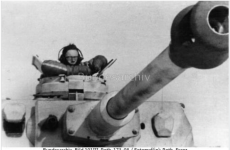wayne556517
Lieutenant General
- Joined
- Aug 28, 2007
- Messages
- 16,907
What are peoples thoughts on this beast, it is still available, was there a problem with it?
The main issue is the absence of anti-magnetic Zimmerit coating, which was present on all tanks and SPGs from December 1943 to September 1944.What are peoples thoughts on this beast, it is still available, was there a problem with it?
And also, still that unrealistic blackened muzzle brake !.





Hunter, aesthetics aren't really my priority.Mastercom, you might be better served saying your preference is for a non-blackened muzzle brake, because you think it looks better. There's absolutely nothing wrong with that, and I'm sure there are other collectors who share your sentiment.
However, making a factual declaration that a blackened muzzle brake is unrealistic is just incorrect, especially on a winter whitewashed Stug.
First, batches of KwK 40 and StuK 40 muzzle brakes were literally finished in solid black and installed in AFVs. Second, the photographic record has scores of pictures (like the ones below) of whitewashed Panzer IVs and Stugs with their KwK40/StuK40 muzzle brakes solid black after seeing action. First Legion's treatment of the blackening is actually very realistic, where the muzzle brake itself is black and then there is less powder residue weathering on the cannon barrel the farther it gets away from the muzzle brake.
View attachment 358450
View attachment 358451
View attachment 358452
View attachment 358453
View attachment 358454

